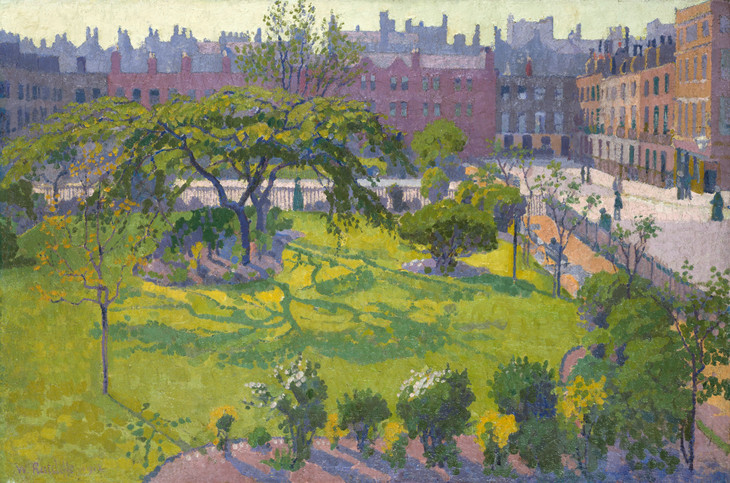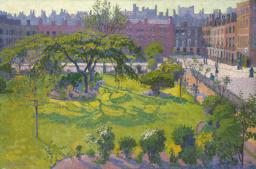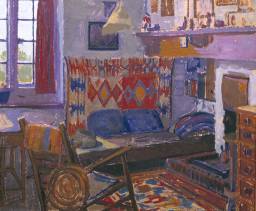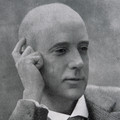William Ratcliffe 1870–1955
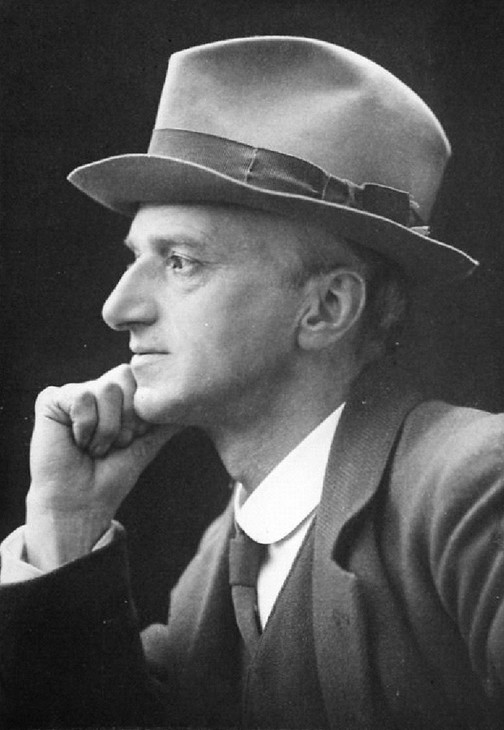
William Ratcliffe
Letchworth Museum and Art Gallery
Photo © Letchworth Museum and Art Gallery (North Hertfordshire Museum Service)
Fig.1
William Ratcliffe
Letchworth Museum and Art Gallery
Photo © Letchworth Museum and Art Gallery (North Hertfordshire Museum Service)
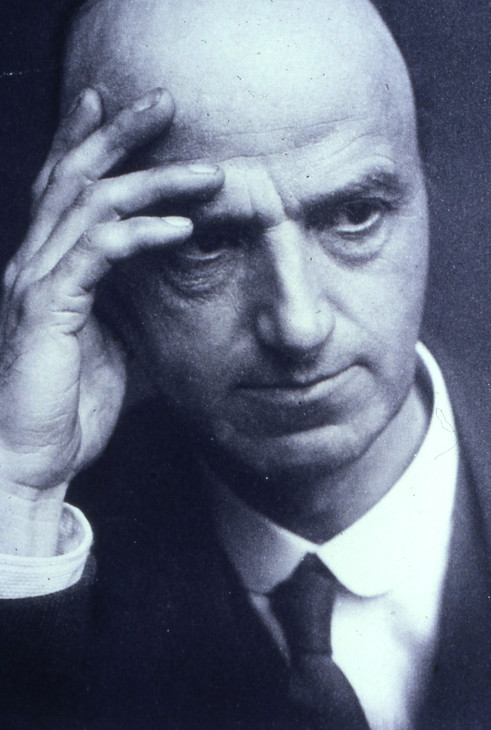
William Ratcliffe
Letchworth Museum and Art Gallery
Photo © Letchworth Museum and Art Gallery (North Hertfordshire Museum Service)
Fig.2
William Ratcliffe
Letchworth Museum and Art Gallery
Photo © Letchworth Museum and Art Gallery (North Hertfordshire Museum Service)
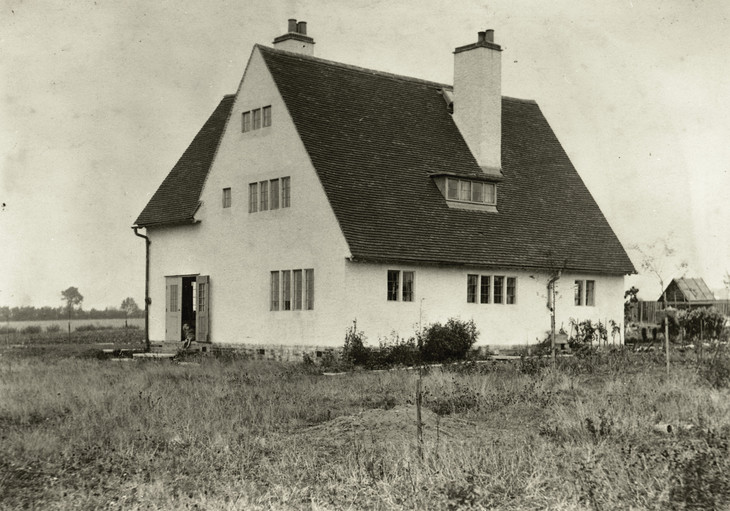
Stanley and Signe Parker's house, 102 Wilbury Road, Letchworth Garden City c.1910
First Garden City Heritage Museum
Photo © First Garden City Heritage Museum
Fig.3
Stanley and Signe Parker's house, 102 Wilbury Road, Letchworth Garden City c.1910
First Garden City Heritage Museum
Photo © First Garden City Heritage Museum
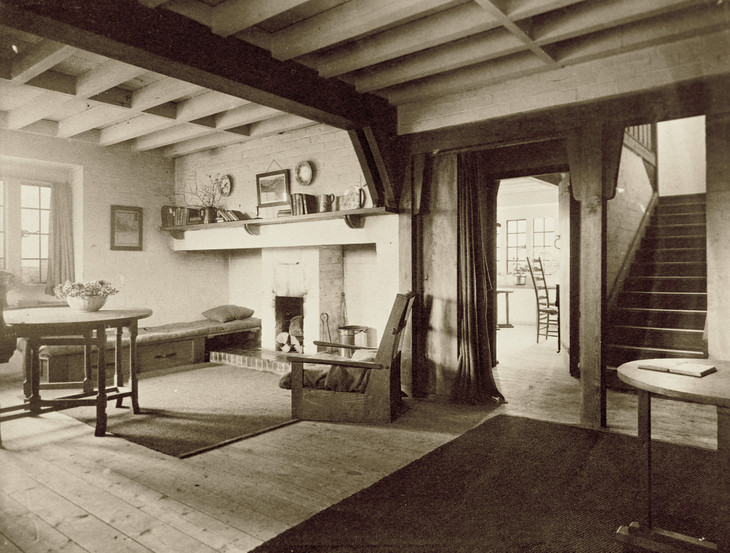
Interior of Stanley and Signe Parker's house, 102 Wilbury Road, Letchworth Garden City c.1909
First Garden City Heritage Museum
Photo © First Garden City Heritage Museum
Fig.4
Interior of Stanley and Signe Parker's house, 102 Wilbury Road, Letchworth Garden City c.1909
First Garden City Heritage Museum
Photo © First Garden City Heritage Museum
During his first years in Letchworth, Ratcliffe worked as a freelance designer producing illustrations of the Garden City for books, postcards and the annual engagement calendar published by new printing companies such as the Garden City Press, as well as possibly continuing with his wallpaper designs.3 However, with Gilman’s encouragement, Ratcliffe decided to abandon graphic design and enrol at the Slade School of Fine Art in London. He studied there part-time for a term starting in January 1910,4 and at the same time began attending the regular ‘At Homes’ held at 19 Fitzroy Street under the auspices of Walter Sickert. Paintings such as Interior c.1911 (private collection),5 which depicts a woman seated in a domestic interior painted in bright colours with impasto brushstrokes, show the impact the new group had on his work.6 Likewise, in depicting a central London square in Clarence Gardens 1912 (Tate T03359, fig.5), Gilman’s and Gore’s treatment of similar subject matter is evident.
Ratcliffe was subsequently proposed by Gilman for membership of the Camden Town Group, showing four works in each of the three exhibitions. In a review of the first exhibition in June 1911, the Daily Telegraph described him as ‘a valiant and well-skilled impressionist of the French type’.7 A reviewer in the Sunday Times wrote:
Pleasant luminist landscapes are ... shown by J. B. Manson and W. Ratcliffe, the two newest recruits to the group, whose works, like all the other paintings in this collection, have engaging qualities of colour and surface.8
His paintings shown in the second exhibition in December 1911 received no especial comment, but in the third exhibition in December the following year his work was again appreciated, with the critic of the Morning Post writing, ‘Mr. W. Ratcliffe, who is new to us, has a clear, untrammelled vision and considerable adaptability of expression’.9 Sir Claude Philips in the Daily Telegraph praised two works, one of which is now in the Tate collection (Tate T03359):
Out of two in themselves fairly prosaic scenes, ‘Clarence Gardens’ and ‘Hotel Cecil from Hungerford Bridge,’ Mr. W. Ratcliffe has without offending against the modesty of truth, extracted elements of beauty. In both cases compositions of decorative aspect and satisfying harmony, both linear and chromatic, have been obtained.10
In July 1911 Ratcliffe exhibited with the Allied Artists’ Association, and in 1913 he became a founder-member of the London Group, contributing regularly to their exhibitions until 1926 (he resigned in 1930). Around 1910 he moved to Finchley Road in north London but, finding it difficult to support himself on the modest sums earned from painting sales, he relied on the support of friends and family, frequently offering paintings in return for accommodation or other services. Around 1912 he moved to Hampstead Garden Suburb to live with his brother, the journalist Samuel Kerkham Ratcliffe (1868–1958), known as S.K. Ratcliffe.11 There he painted the view from the Club Tower looking down their road in Hampstead Garden Suburb from Willifield Way c.1914 (Tate T12260).
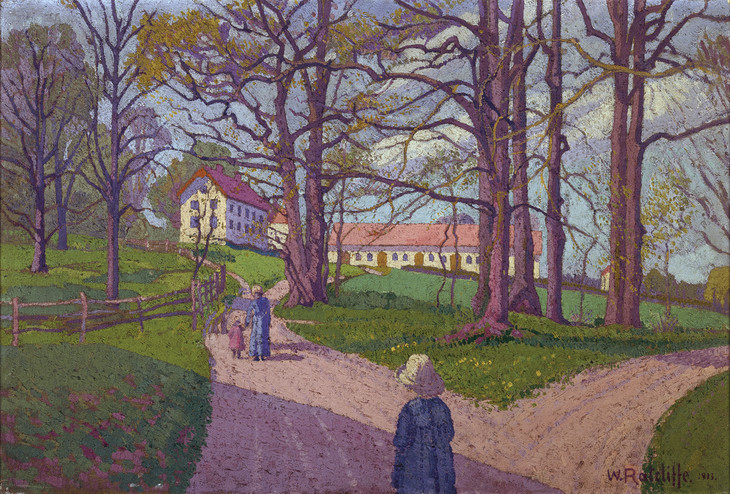
William Ratcliffe 1870–1955
Spring in Sweden 1913
Oil paint on canvas
51 x 76 cm
Private collection
© Estate of William Ratcliffe
Photo © Jerry Hardman-Jones
Fig.6
William Ratcliffe
Spring in Sweden 1913
Private collection
© Estate of William Ratcliffe
Photo © Jerry Hardman-Jones
After Sweden, Ratcliffe visited Dieppe in northern France, possibly staying there with Sickert,14 painting works such as Dieppe c.1913–14 (Aberdeen Art Gallery).15 Upon returning to England, he again lived with his brother in Hampstead Garden Suburb and began painting one of his most well-known paintings, The Coffee House, East Finchley 1914 (Southampton City Art Gallery).16 In 1953 he wrote to the curator of Southampton City Art Gallery describing the method he used to create this work:
I well remember the time it was painted, just before the first war was started. I was then living in the Hampstead Garden Suburb and discovered this coffee house at East Finchley and went in to lunch one day and afterwards started a drawing sitting on the back seat with the sunlit red blind behind me and reflected in the mirror opposite. I was interested enough to carry on for several days and used to walk over the fields to Finchley almost daily until I had enough information for the picture which was progressing at home at the same time.17
The painting echoes Gilman’s contemporary work, particularly An Eating House c.1913–14 (Sheffield City Art Galleries).18
Ratcliffe continued to live an itinerant existence, staying periodically with family and friends, particularly his brother’s family, now in Berkhamsted in Hertfordshire (see Tate T03167), and the Parkers in Letchworth (see Tate T00062). He often made excursions to the countryside, and from about 1914 frequently stayed in the family weekend cottage in Whiteleaf near Princes Risborough in the Chiltern Hills, Buckinghamshire. Throughout the 1920s he went on a number of painting expeditions to the West Country, residing with his friend, the artist C.J. Fox.19
The death of Spencer Gore in 1914 and Gilman five years later affected Ratcliffe profoundly, and he later told the artist William Townsend that ‘he had never painted so happily deprived of their encouragement’.20 In 1926 Ratcliffe stopped exhibiting with the London Group and resigned four years later. At this time he produced fewer oil paintings, and instead concentrated on wood engravings and works in ink and watercolour,21 exhibiting in an International Exhibition of Watercolours at the Art Institute of Chicago in 1927 and 1928. He held his first substantial show in 1946 at Roland, Browse and Delbanco, exhibiting sixteen works, all of which were painted in the period 1913–21. In August 1954 a solo exhibition was held at the Letchworth Museum and Art Gallery, where he showed forty-four works, a mixture of oil paintings, watercolours and woodcuts.22 Not long after, on 6 January 1955, Ratcliffe died at his relatives’ home in Hampstead. At the age of 84, he was one of the last survivors of the original Camden Town Group.
Ratcliffe is generally considered to have played a relatively minor role within the Camden Town Group. This was partly due to what his friends described as his retiring disposition and the difficulty he had in selling pictures. However, an obituary in the Times praised him for having ‘domesticated Post-Impressionism in England as Impressionism had been domesticated by the original members of the New English Art Club’.23 N.D. Deuchar, who had lived with Ratcliffe at 122 Wilbury Road, responded to his death with the following description in the Citizen: ‘As a painter he seemed content to be unambitious, but that was deceptive. His subjects were quiet and perhaps almost tame, but he had such exactitude and care in handling the shapes of buildings and apparatus, as well as great skill in laying his colour, that he was marked out as a true artist.’24
Notes
Quoted in Rosamund Allwood, Garden City to Camden Town: The Art of William Ratcliffe, exhibition catalogue, Letchworth Museum and Art Gallery 2003, [p.3].
Parker also taught Ratcliffe how to cut woodblocks. See William Ratcliffe: Paintings and Prints, Letchworth Museum and Art Gallery 1982, p.3.
Ian Tregarthen Jenkin, Secretary, Slade School of Fine Art, letter to Tate Gallery, 18 October 1962, Tate Catalogue file.
As noted by Francis Farmar, Interior is particularly similar to Spencer Gore’s Interior, Mornington Crescent 1910 (Christchurch Mansion, Ipswich). Reproduced ibid. (77).
Reproduced in Harold Gilman and William Ratcliffe, exhibition catalogue, Southampton City Art Gallery 2002, p.13, and Government Art Collection, http://www.gac.culture.gov.uk/work.aspx?obj=28175 , accessed 25 February 2011.
Reproduced in The Painters of Camden Town 1905–1920, exhibition catalogue, Christie’s, London (144).
C.J. Fox had previously lived in Letchworth and had sung in the Norton Pageant Chorus with Ratcliffe in the second Garden City Pantomime in January 1910. See Allwood 2003, [p.5].
Andrew Forge (ed.), The Townsend Journals: An Artist’s Record of his Times, London 1976, p.72; quoted ibid., [p.10].
Patricia Williams, William Ratcliffe: A Country Walk, St Ives 2010, reproduces seven watercolours, one woodblock print, and four oil paintings, as well as four photographs of Ratcliffe.
Catalogue entries
How to cite
Heather Birchall, Helena Bonett and Ysanne Holt, ‘William Ratcliffe 1870–1955’, artist biography, February 2011, in Helena Bonett, Ysanne Holt, Jennifer Mundy (eds.), The Camden Town Group in Context, Tate Research Publication, May 2012, https://www

